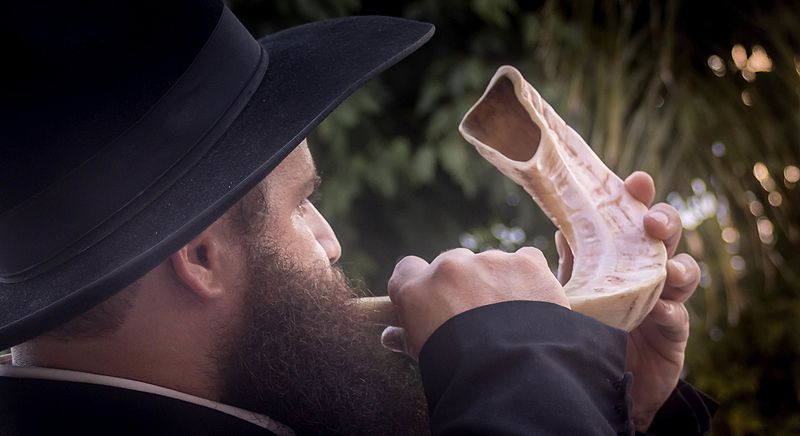1. Yom Kippur is considered to be a “super Sabbath” (shabbat shabbaton in Hebrew)—a soul-searching opportunity for the pious and evil alike.
2. Yom Kippur is observed on the 10th day of the Jewish month of Tishrei (Sept. 16, 2021). Tishrei’s astrological sign is Libra, which symbolizes the key themes of Yom Kippur: optimism, truth, justice, scales, humility and tolerance. Libra is ruled by the planet Venus (Noga in Hebrew—the name of my oldest granddaughter), which represents divine light and compassion.
4. Yom Kippur (the 10th day of the Jewish year) concludes 10 days of soul-searching, atonement and repentance—the holiest Jewish time—which begins on Rosh Hashanah, the first day of the Jewish year, commemorating the creation of the first human being, Adam.
5. The Hebrew word “kippur” (atonement/repentance) is a derivative of the biblical words “kaporet,” which refers to the cover of the Holy Ark in the Sanctuary, and “kopher,” the cover of Noah’s Ark and the Holy Altar in the Temple. Yom Kippur resembles a spiritual cover, which separates the holy from the mundane, the spiritual from the material. The “kippah” (skullcap, yarmulke) which covers one’s head during prayers reflects a spiritual covering.
6. Asking forgiveness of fellow human beings—and not only of God—is a major feature of Yom Kippur. From acrimony and vindictiveness to forgiveness and peace of mind. Hence, sinners and criminals are welcome at Yom Kippur services. Asking forgiveness is consistent with Leviticus 19:18 (“Love thy neighbor as yourself”), and with the philosophy of Hillel the Elder, a leading 1st century BCE Jewish sage: “Do not do unto your fellow person that which is hateful to you. That is the essence of the Torah; the rest is commentary.”
Asking forgiveness of fellow human beings aims at displaying magnanimity, humility, compassion, consideration, responsibility, optimism, faith and genuine repentance. It means recognizing one’s fallibilities, learning from one’s mistakes, minimizing future missteps, elevating morality and enhancing family and community cohesion.
7. Fasting is a key feature of Yom Kippur, reducing the connection to the material in order to focus on soul-searching, examining and enhancing one’s track record toward fellow human beings, and enhancing empathy with the needy. The Hebrew word for fast is “tzom,” which is the root of the Hebrew word “tzimtzum,” meaning to reduce/focus.
8. There are six annual Jewish fast days:
a) The 10th day of the month of Tishrei is Yom Kippur.
b) The 10th day of Tevet commemorates the beginning of the 586-589 BCE siege of Jerusalem by the Babylonian King Nebuchadnezzar.
c) The 17th day of Tammuz commemorates the 586 BCE and 69 CE breaching of Jerusalem’s walls by the Babylonian and Roman empires, as well as the breaking of the Stone Tablets by Moses upon confronting the Golden Calf.
d) The 9th day of Av is the most calamitous day in Jewish history, commemorating the destruction of the first (586 BCE) and second (70 CE) Jewish Temples, by the Babylonian and Roman empires respectively; the beginning of the Jewish exile from the Land of Israel; the Ten Spies’ bankruptcy of faith; the crushing of the 132-135 CE Bar Kokhba Revolt by Roman Emperor Adrianus (600,000 Jewish fatalities); the pogroms of the First Crusade (1096-1099) in Germany, France, Italy and Britain; the expulsion of the Jews from Britain (1290) and Spain (1492); the eruption of the First World War (1914); and the beginning of the 1942 deportation of Warsaw Ghetto Jews to the Treblinka extermination camp.
e) The 3rd day of Tishrei commemorates the murder of the Jewish governor of Jerusalem Gedalyah Ben Achikam by another Jew, Yishmael Ben Netanyah (586 BCE).
f) The 13th day of the month of Adar is the Fast of Queen Esther—one day before the Purim holiday—which commemorates Queen Esther’s three-day fast prior to her appeal to the Persian King Ahasuerus to refrain from exterminating the Jews (around 480 BCE).
9. Yom Kippur is concluded by blowing the shofar, 10 days after the blowing of the shofar on Rosh Hashanah (the Jewish new year). It represents a moral wakeup-call, optimism, determination, humility and peace through strength. It commemorates the saving of Isaac by a ram, the receipt of the Ten Commandments at Mount Sinai, the conquest of Jericho by Joshua and Gideon’s victory over the 135,000-strong Midianite army.
A Hebrew synonym for shofar is Yovel (Jubilee), which is the biblical role model for liberty, as well as a source of water.
10. A memorial candle in memory of one’s parents is lit on Yom Kippur, reaffirming the commandment to “Honor Thy Father and Mother,” providing an opportunity to ask forgiveness of one’s parent(s) and asking forgiveness on their behalf.
Yoram Ettinger is a former ambassador and head of Second Thought: A U.S.-Israel Initiative.
This article was first published by The Ettinger Report.


























